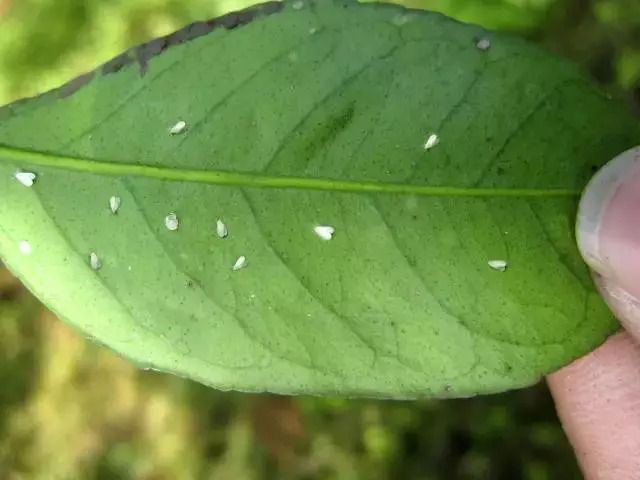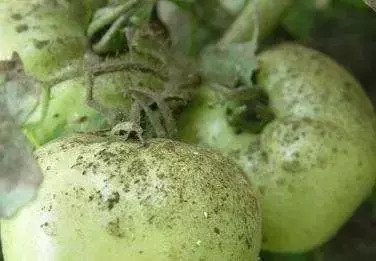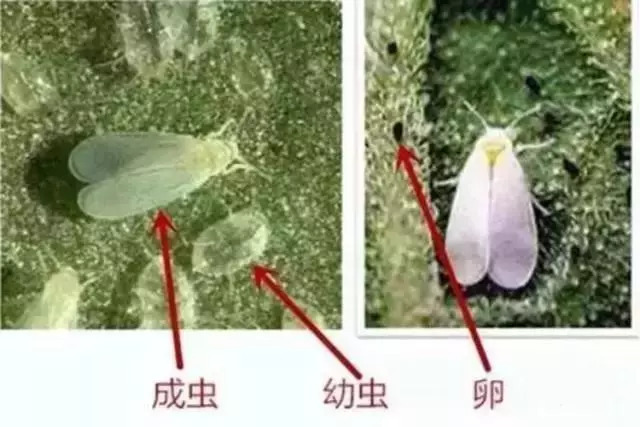Fact sheet Whitefly, also known as the white moth, is a sucking pest and is a worldwide pest. It has a wide range of hosts and is susceptible to this pest in both protected areas and open fields. More than 10 generations occur in the greenhouse every year, overlapping generations. A variety of crops are also common in various places, such as vegetables, flowers, fruit trees, medicinal materials, tobacco, etc., and the degree of damage is increasing year by year, and the prevention and control is difficult. In addition, in recent years, with the increase of application of drugs, its resistance has gradually increased, becoming more stubborn and refractory. Law of occurrence There are two key periods throughout the year: (1) In the spring, it occurs in the greenhouse, and the time is from mid-April to May; (2) In the fall, it occurs in greenhouses, cold sheds, open fields and other facilities. The time will be from the end of July to September, and the greenhouse will continue until the end of November. harm Generally, adults and nymphs like to cluster on the back of plant leaves, so that the sucking mouth can absorb the plant juice, so that the damaged leaves are chlorotic, yellow, wilting, and even the whole plant is dead. Adults will be excreted, and excreta will seriously affect the fruit surface or leaf surface of the fruit, causing diseases such as soot disease. And it also spreads a lot of viruses, causing other diseases to occur. The current drug effect is not ideal 1. The agent is used too frequently, etc., and its resistance is enhanced. 2. The amount of reproduction is large and fast. Like the greenhouse, more than 10 generations can occur each year. The developmental time of each generation is shortened with increasing temperature. It takes 31.5 days for generation at 18 °C; 24.7 days at 24 °C; and 22.8 days at 27 °C. The developmental stages of each insect state at 24 °C were: 7 days in egg stage, 5 days in 1st instar, 2 days in 2nd instar, 3rd in 3rd instar, and 8d in pseudoprine. When the average temperature of the shed is 19 °C, the generation is about 30 days, and the number of eggs laid per female is as high as 3000-4000. After 1 generation, the population can increase by 140-150 times. The number of reproduction increases exponentially. Medium is rare. 3. Multiplication of breeding places The open field of the greenhouse is its ideal place to live, so that the whitefly has enough food and breeding sites throughout the year. 4. Its four insect states are simultaneously distributed Adult whitefly can fly in a short distance, and the body surface wax is on the back of the young leaves of the plant, and lay eggs on the young leaves. As the plants grow, the adults continue to transfer to the upper leaves, and the insects form a certain pattern on the plants: the uppermost leaves, the most yellow and yellow eggs, and the lower ones are mostly black. Eggs, and the lower part are mostly nymphs of the first age, then the middle nymphs, and the lower part is 蛹. The insects on the plants are more complicated and difficult to control. General medicine can only kill adult worms, it is difficult to kill eggs and larvae, the number of medications can not keep up with the speed of reproduction, resulting in more difficult to treat. 5. People's awareness of prevention and control is weak, and the treatment is light and light. After the vegetables are planted, the young leaves are the best food for the whitefly pests. Some farmers have a weak sense of using insect nets, there is no hole to make up, there is a gap, and even after planting, vegetables start to grow. After using the whitefly, the insect net is used, which is very bad for controlling the whitefly. 6. Pharmacy selection problem Some medicines only kill adult insects and do not kill eggs, which leads to the continuous growth of eggs after hatching; some medicines only kill eggs without killing adults, causing adults to continue to lay eggs, and the eggs continue to hatch after hatching. For example, the drugs we usually use, imidacloprid, acetamiprid, nitenpyram, pymetrozine, thiamethoxam, etc., these agents are all adult worms, after the drug is finished, a large adult will die, but for the other three Insect eggs, nymphs and mites do not work well. Therefore, there will be adult pests in some time. Prevention and treatment Rotation In areas where white mites occur, the open-season vegetables in the sheds or in the sheds should be selected from celery, squid, spinach, rapeseed, garlic, and other white glutinous vegetables that are not suitable for food and low temperature. It can also prevent spread to the shed. 2. Eradication of insect sources Clean up the residual leaves and weeds in time after harvesting each crop to reduce its boarding place. During the summer off-season period, high temperature shacks can be carried out, which can effectively eliminate the white mites in the shed. Use a fumigant to smother the pests before sowing the vegetables. An insect-repellent net is set on the seedbed or in the greenhouse vent to prevent foreign insects from moving in. 3. trap and avoid Whitefly has a strong tendency to yellow, and it can be used to trap adult insects in the greenhouse in the early stage. 4. Biological control When the average adult of whitefly mites in the greenhouse has 0.5-1 heads per plant, the artificially propagated larvae are released, and each adult or cockroach 3 to 5 heads are placed once every 10 days for a total of 4 times. It can also artificially release grass ridges, and a grass ridge can prey on more than 170 larvae of whitefly larvae. 5. Chemical control Bifenthrin aqueous emulsion (registered crop cucumber), beta-cypermethrin smoker (registered crop protected tomato), high chlorine and buprofezin emulsifiable concentrate (registered crop protected tomato). Also recommended to follow two aspects of the spray 1. Select different insecticides with different mechanisms of action For example, imidacloprid, acetamiprid, nitenpyram and other nicotinic insecticides, and pyridinamide flavonamide, or pyridine pyridone. 2. To prevent both adult and nymph It is recommended that the above-mentioned insecticides and spirotetramat or pyridone are used in combination, and the adult nymphs are simultaneously controlled. At the same time, in the case of serious resistance to pests, mineral oil is not tested. Tests have shown that certain mineral oils are highly active against whitefly. (Source: 191 agricultural materials, daily agricultural materials) Zhejiang Changxing Senda Bamboo & Wood Products Co.,Ltd , https://www.sendaflooring.com



White powder is a disaster, why is it a fight? What should I do?